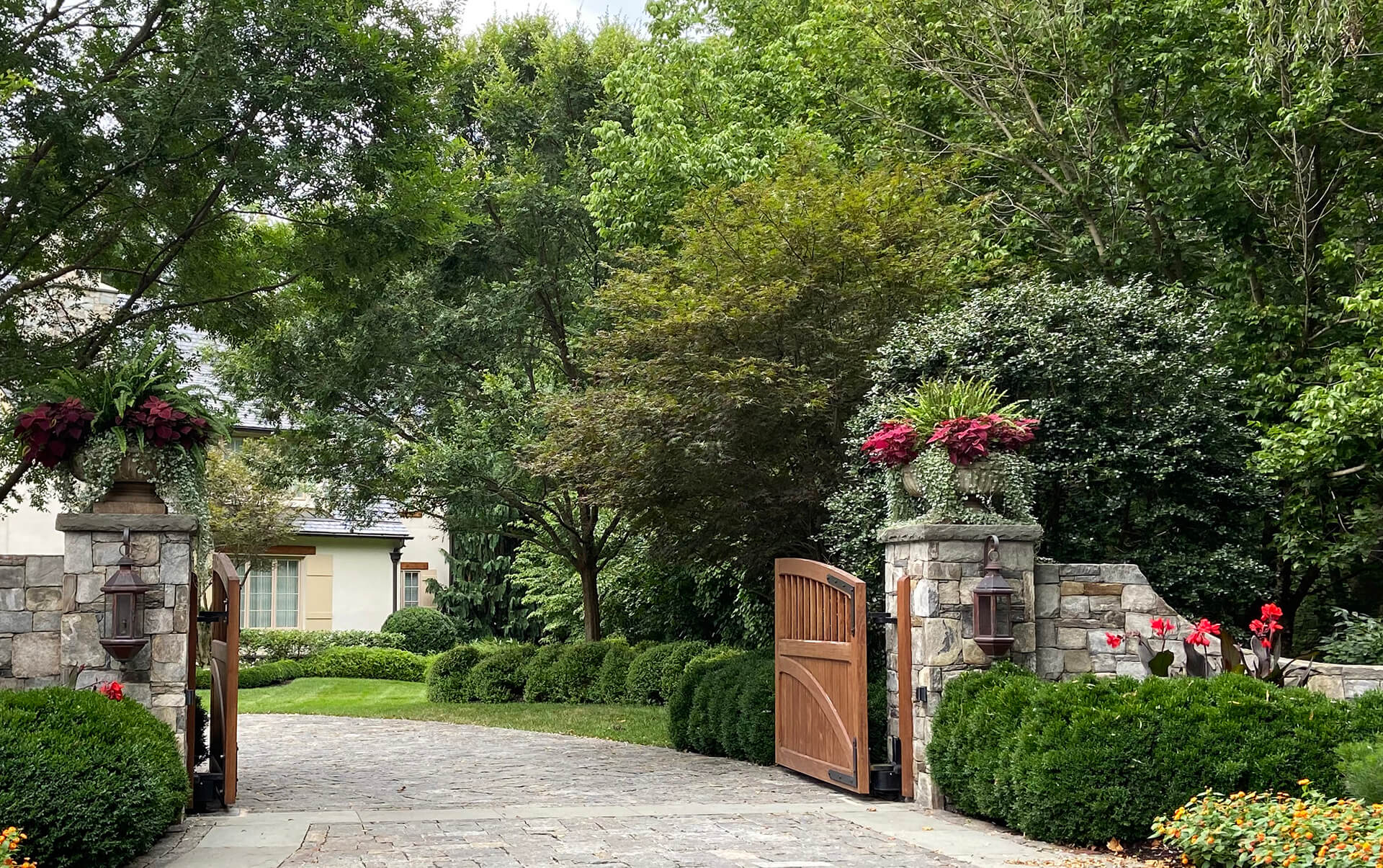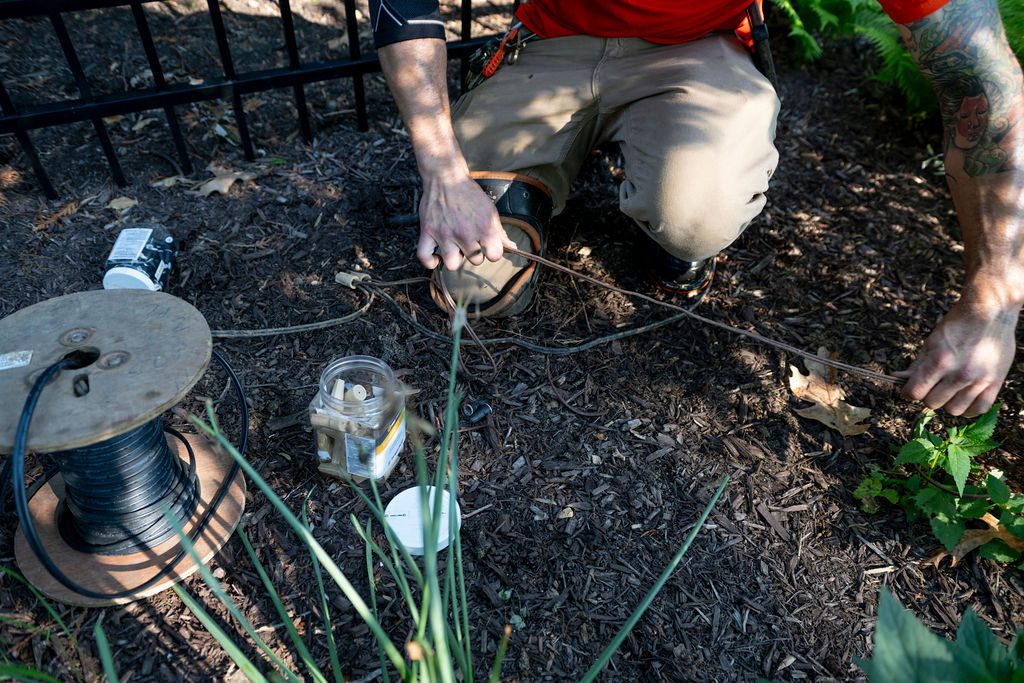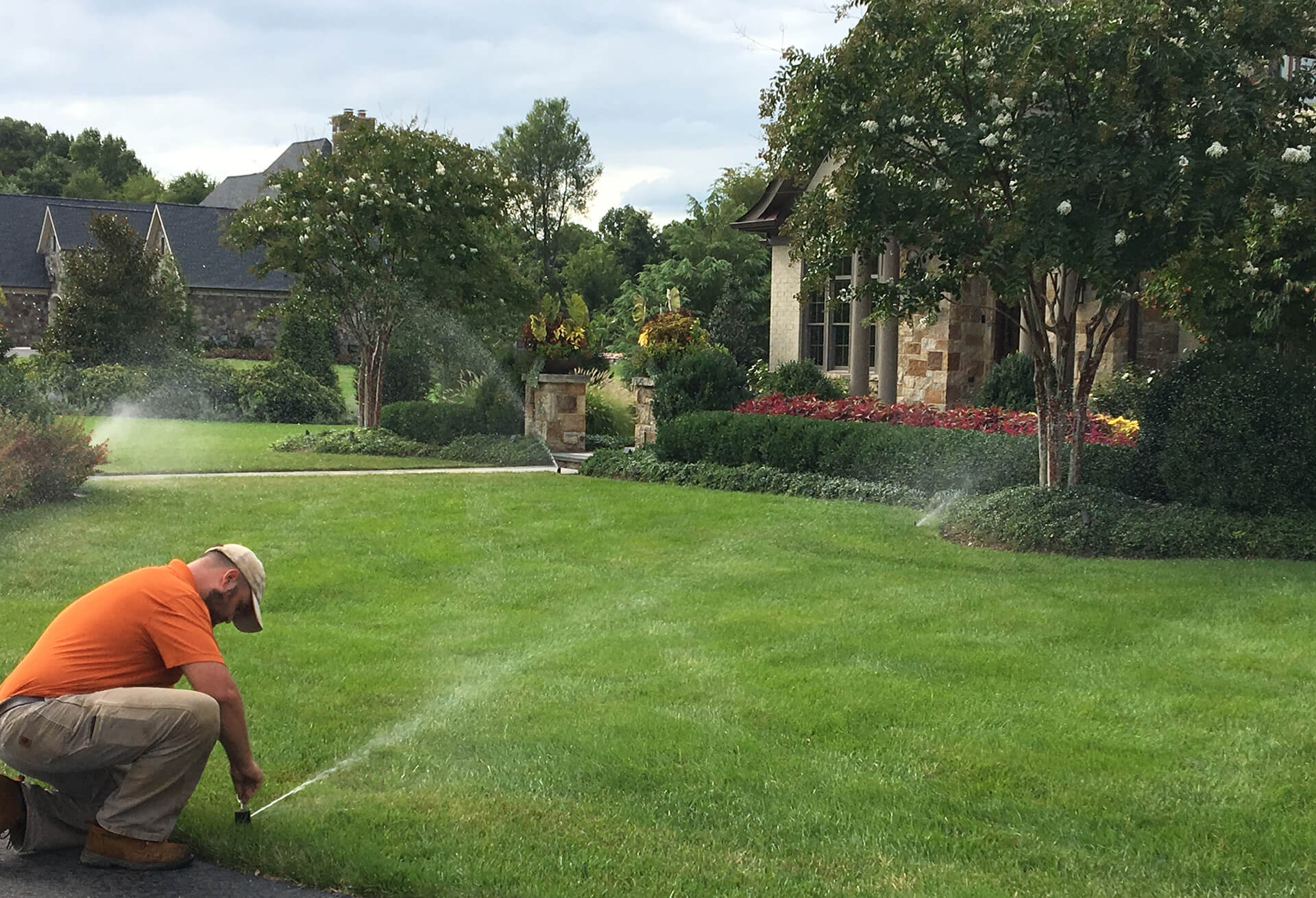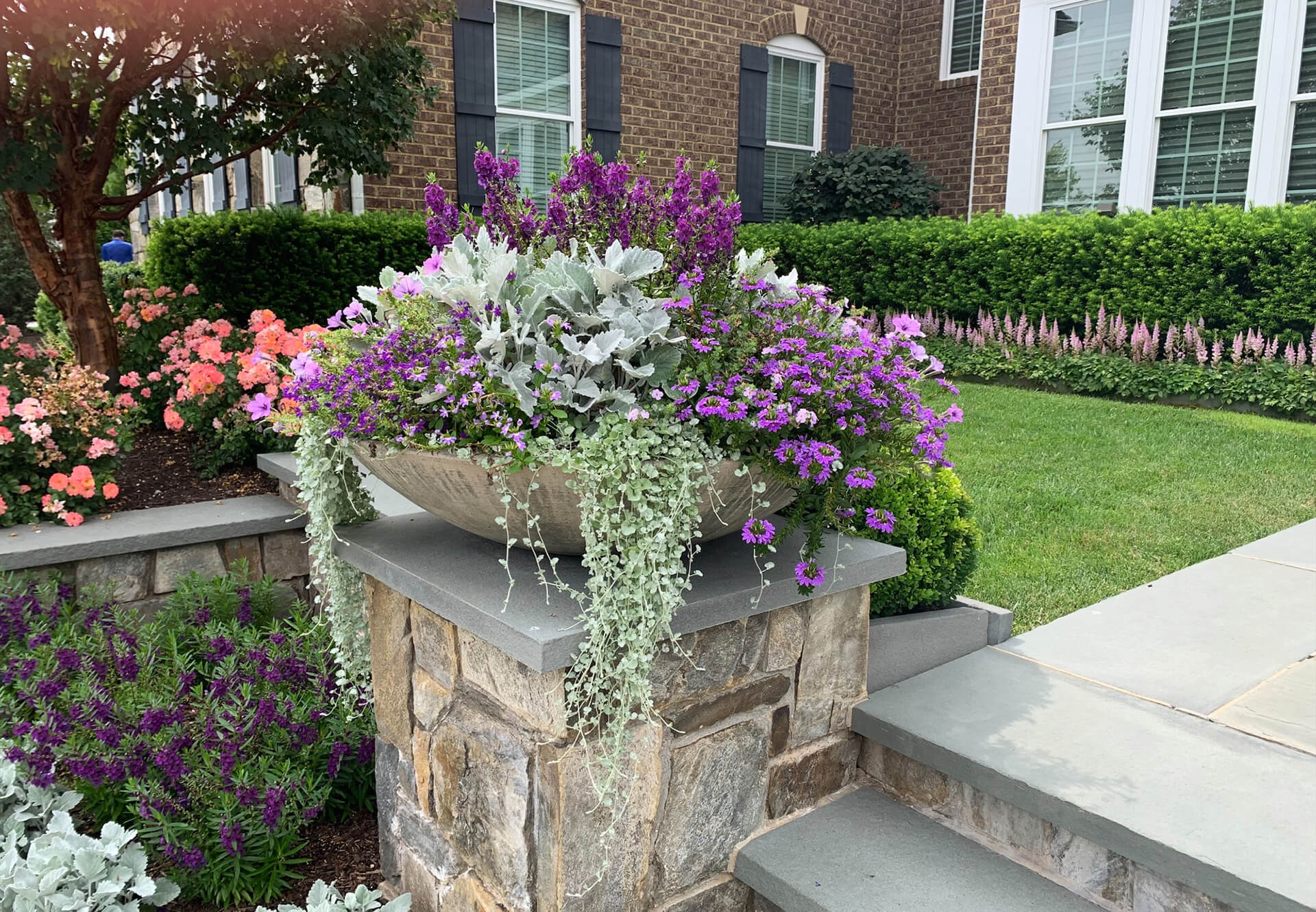Landscape management is a comprehensive approach to landscape maintenance that places responsibility for the upkeep of your property in the hands of one company.
This “all-in-one” approach encompasses all aspects of the landscape. That includes:
- Mechanical systems. Maintenance and repair of water features, irrigation, lighting, and outdoor audio systems
- Constructed elements. Maintenance and repair of stonework, patios, walkways, and shade structures
- Horticultural elements. Care and protection for the living part of the landscape including trees, shrubs, perennials, annuals, groundcovers, and lawn

For this article we are focusing on the horticultural element, garden care.
Why is this level of landscape maintenance and garden care important? Because landscapes are not a “set and forget” affair. Your landscape is a living, ever-changing environment. It evolves over time and needs consistent professional care to reach its full potential and fulfill the vision of the original design.
The expert resources of a landscape management company ensure that you’ll be able to protect your investment.
The Value of Landscape Management
Landscape architects create the foundation for a garden—structural components, grading, and planting plans. Once construction is completed, they must hand off the upkeep of their vision to a landscape maintenance crew that will care for the garden as it develops and fills in.
The imperative for consistent expert maintenance is the reason Surrounds decided to form its garden management team.
Before that, if one of the landscape architects decided to check one of their projects a year or so later, they might find that it wasn’t the “show-stopper” they’d envisioned. We determined that the problem was the landscapes weren’t being correctly managed and maintained.
As outlined above our landscape maintenance and garden care service is a comprehensive, all-in-one service that covers the lawn, garden, trees, hardscapes, structures, water features, and lighting.
Unlock the full potential of your lawn and gardens!
What’s the difference between a conventional landscape company and one whose staff understands design, horticulture, and landscape systems? To find out, click the button below.
The Difference Between Landscape Management vs. Basic Maintenance
The average landscape maintenance company will take care of the basics: mowing, weeding, edging, mulching and some pruning. But the average company may not have personnel with horticultural expertise to identify and treat plant diseases or insect infestations.
In addition to providing the standard menu of yard maintenance services, a full-service landscape management company is characterized by:
- A superior level of horticultural expertise. They know the plants and how to best care for each of them.
- The technical skills to adjust and maintain irrigation, lighting, and water feature systems
- An understanding of landscape design principles as they apply to garden styles
- An ability to communicate with and educate the homeowner


Ask the Landscape Management Experts
To answer common homeowner questions about the benefits of retaining a full-service landscape management company, we spoke with Surrounds garden managers about best practices. Here is what they had to say:
How do you set expectations with landscape management clients?
When we are taking over maintenance of an established landscape, we walk the property and talk with the homeowner. I try to understand what they like and want more of. And I try to help them articulate anything they see as an issue. Then, I’ll offer my assessment. We talk about specific changes and improvements we’ll need to make.
What questions or concerns do clients express after planting is completed?
Once we’ve completed planting, the question always comes up: why is everything spaced so far apart? I remind them that it’s going to fill in. We have positioned plants so they have room to spread out as they mature.

How do you help plants establish and get a good start?
Four key components contribute to the success of a new landscape.
1 Irrigation.
Most important of all is to set a proper watering schedule. It’s a challenge to keep new plantings consistently moist without over watering. The irrigation system settings must be correctly adjusted for the needs of the various types of plants. For example, we must take care to not over water evergreens or under water perennials. New turf requires extra attention because it is extremely sensitive to moisture and can easily dry out.
2 Soil Testing.
We do periodic soil testing to ensure garden plants and turf are able to absorb the nutrients they need for healthy growth. Based on the results we get from the initial soil tests, we usually amend soil on the entire property during construction so we can get great returns on the growth later. Healthy soil is the foundation for a thriving landscape.
3 Pest and Disease Management.
Even though we use high-quality nursery stock, we actively monitor new plants for signs of disease or pest infestation. We use a proactive method called IPM that allows us to identify and spot treat issues before they can spread and cause serious damage.
4 Minimal Pruning. We don’t do much pruning in the first year because pruning reduces root growth. Young plants need to put their energy into producing as many roots as possible to establish quickly.

Do you have any insider tricks that you rely on for planting?
If a plant or tree has been confined in a pot for too long, it won’t know how to grow other than in circles. So, we’ll use a field knife to score the root mass with vertical cuts. Scoring opens up wounds and encourages roots to grow outward in different directions. That’s important because if that step gets missed, you might see that tree or plant start to decline down the road because it is root bound.
What to Expect of an Expertly Maintained Landscape
Year One
You’ll see a lot of mulch in between small looking plants. It may not be much to look at now, but a lot is happening underground. Your plants are adapting to a new environment that is different from the nursery where they were grown. They are developing a root system that will make them more self-reliant and able to survive changing seasonal conditions.
Maintenance Highlight: A well balanced irrigation schedule is critical at this time. Too much water can be just as harmful as too little.

Year Two
You’ll see more fullness in foliage and blossoms. Anchored by that sound root system, the plants are now able to develop above ground, reaching out to capture more energy from the sun to power increased growth.
Maintenance Highlight: This is the time to do early season cutbacks and dormant stage pruning to encourage vigorous growth. We may replace plants that didn’t survive or relocate others that aren’t thriving where they are.

Years Three and Four
Now that the root systems are well established, your plants direct nearly all their energy into growth above ground. You will see your plants branching out and bursting into bloom. This is the time when they begin to take on the shape and size of maturity. It’s also a time when you can begin to back off on irrigation. Except in severe drought conditions, established plants will be able to survive and recover on their own.
Maintenance Highlight: Now is the time for finesse. Subtle corrections and tweaks will bring out the best in your gardens through all seasons. We’ll employ corrective pruning to guide plants into their natural growth patterns. Now is the time to be alert for signs of disease or pest infestation.


Much of what you see in your landscaping and gardens is the result of time and patience. The patient stewardship of your landscape management team over time makes it possible for your landscape architect’s original vision to reveal itself to you in its fullest expression.
Are your gardens being cared for by a company that fully understands the needs of your landscape? If not, schedule a consultation with one of our garden managers. We’ll schedule a time to walk your property and talk about what it needs.
Perhaps you are wondering how to bring out the fullest expression in your landscape and gardens. Our eBook: Choosing the Right Kind of Landscape Maintenance Firm, is full of valuable information to help you understand the fundamental differences between landscape maintenance companies.